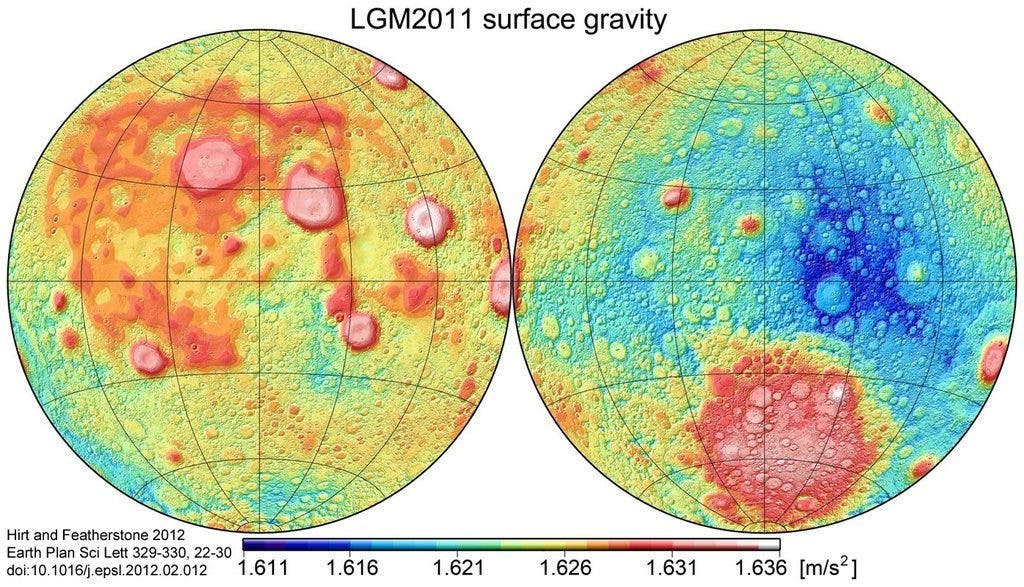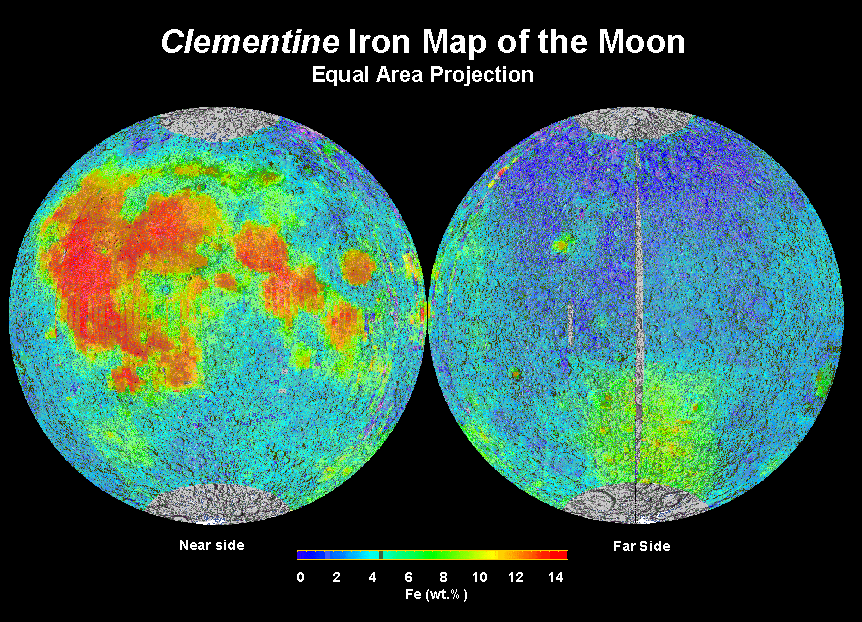As we’ve already posted today, NASA’s GRAIL mission did a great job of mapping out the gravitational features of the Moon. Just as a quick add to that, here’s two maps which I hope you’ll find interesting:

mage is the result of the four-way Doppler measurements by Relay satellite and Main Orbiter transponder (RSAT) and Differential VLBI Radio Source (VRAD) on board JAXA’s “Kaguya” (SELENE) orbiter. LGM2011 gravity acceleration at the lunar surface (unit in ms-2). The near-side is shown on the left, the far-side on the right. Azimuthal equidistant projection with a central meridian of 0° longitude (left) and 180° (right). Meridians and parallels are 30° apart.

mage derived from the Clementine global color data (in 750 and 950 nm wavelengths) showing the concentration of iron in the soils of the lunar surface. Note high iron levels of near side maria and elevated iron associated with South Pole-Aitken basin on the far side. Very low iron of north-central far side suggests large amount of nearly pure anorthosite, indicating early Moon melted globally. See Lucey et al. (1995, Science 268, 1150) for details on this method of iron mapping.









